Consider parallel conducting rails separated by a distance l. There exists a uniform magnetic field B perpendicular to the plane of the rails as shown in Fig. Two conducting wires each of length l are placed so as to slide on parallel conducting rails. One of the wires is given a velocity v0 parallel to the rails. Till steady state is achieved, loss in kinetic energy of the system is

zero
3.4mv20
14mv20
38mv20
The correct Answer is:C
In steady state, velocity of both wires will becomes same.
2mv=mv0⇒v=v0/2
Loss in KE=12mv20−2[12mv2]=14mv20.
Topper's Solved these Questions
- BOOK - CENGAGE PHYSICSCHAPTER - MISCELLANEOUS VOLUME 5EXERCISE - Multiple Correct34videos
MISCELLANEOUS VOLUME 5
- BOOK - CENGAGE PHYSICSCHAPTER - MISCELLANEOUS VOLUME 5EXERCISE - Linked Comprehension84videos
MISCELLANEOUS VOLUME 5
- BOOK - CENGAGE PHYSICSCHAPTER - MISCELLANEOUS VOLUME 3EXERCISE - True and False3videos
MISCELLANEOUS VOLUME 3
- BOOK - CENGAGE PHYSICSCHAPTER - Moving charges and magnetismEXERCISE - Question Bank20videos
Moving charges and magnetism
Similar Questions
Two parallel conducting rails are separated by a distance L. Two identical conducting wires are placed on the rails perpendicular to them. Each wire has mass M. One of the wires is given a velocity v0 parallel to the rails away from the other wire. There is a uniform magnetic field directed into the plane of the figure everywhere. Answer following questions for the system comprising of two wires. [Ignore friction and self inductance]
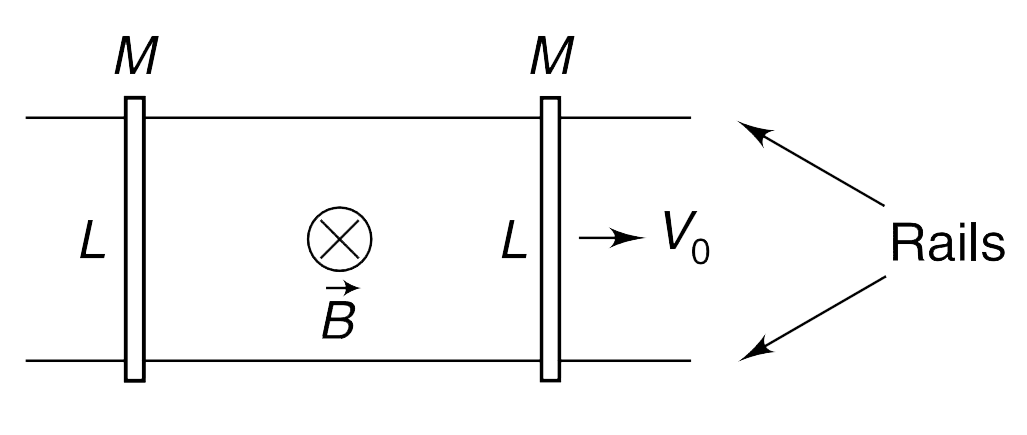
(i) Will the momentum of the system decrease with time?
(ii) What is kinetic energy of the system in steady state?View SolutionShows a rod of length l and resistance r moving on two rails shorted by a resistance R. A uniform magnetic field B is present normal to the plane of rod and rails. Show the electrical equivalence of each branch.
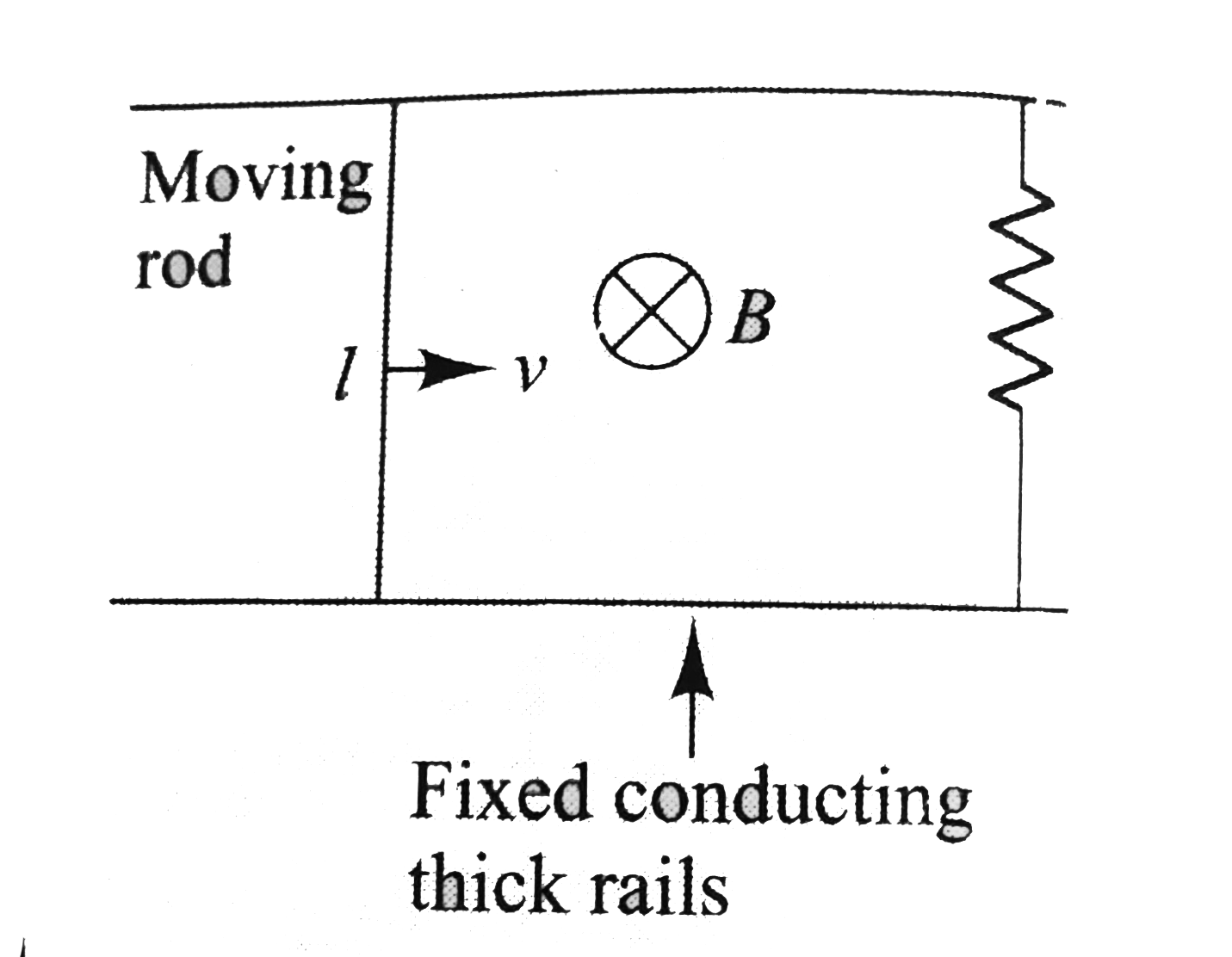 View Solution
View Solution
Knowledge Check
- Question 1 - Select One
A pair of parallel conducting rails lie at right angle to a uniform magnetic field of 2.0T as shown in the fig. two resistor 10Ω and 5Ω are to slide without friction along the rail. The distance between the conducting rails is 0.1m. Then
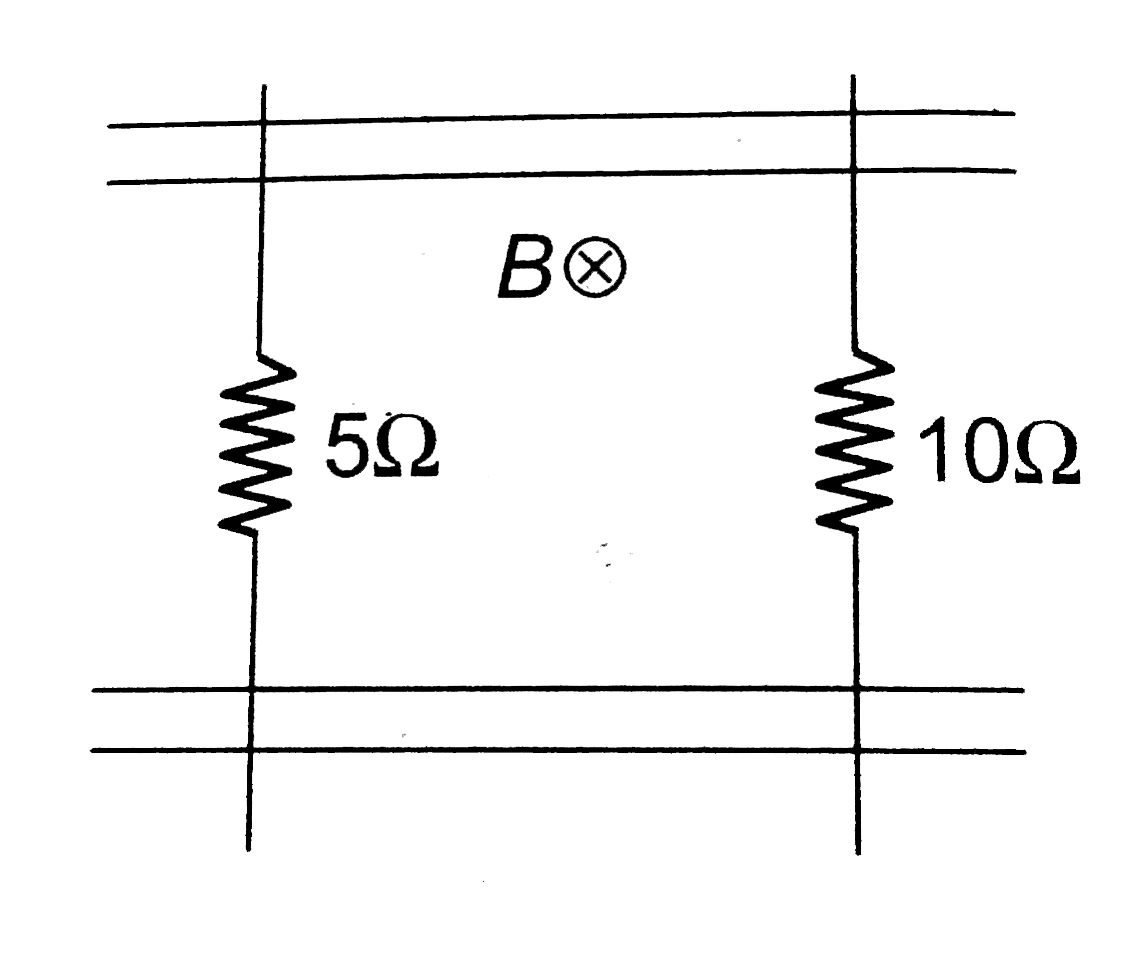 AInduced current =1150A directed clockwise if 10Ω
AInduced current =1150A directed clockwise if 10Ω
resistor is pulled to the right with speed 0.5ms−1 and resistor is held fixedBInduced current =1300A directed anti-clockwise if
10Ω resistor is pulled to the right with speed 0.5ms−1 and 10Ω resistor is held fixedCInduced current =1300A directed clockwise if 5Ω
resistor is pulled to the left at 0.5ms−1 and 10Ω resistor is held at resDInduced current =1150A directed anti-clockwise if5Ω
resistor is pulled to the left at 0.5ms−1 and 10Ω resistor is held at rest - Question 2 - Select One
Figure shows a wire sliding on two parallel, conducting rails placed at a separation L . A magnetic field B exists in a direction perpendicular to the plane of the rails. What force is necessary to keep the wire moving at a constant velocity V ?
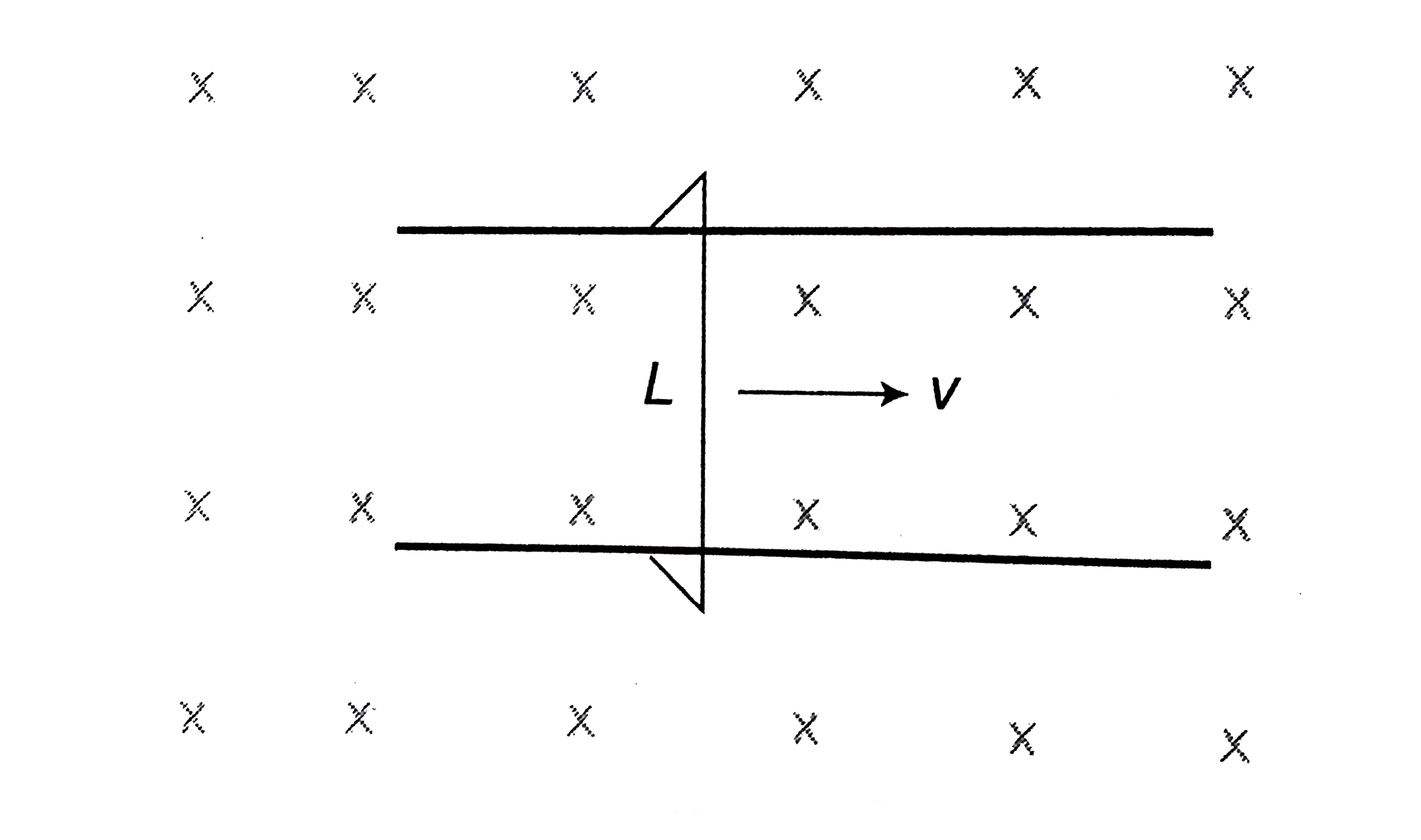 ABvLBBv2LCzeroDB2v2L/R
ABvLBBv2LCzeroDB2v2L/R - Question 3 - Select One
A small conducting rod of length l, moves with a uniform velocity v in a uniform magnetic field B as shown in fig __
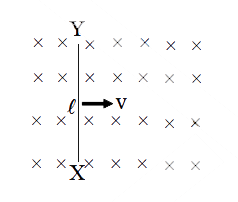 AThen the end X of the rod becomes positively chargedBThe end Y of the rod becomes positively chargedCThe entire rod is unevenly chargedDThe rod becomes hot due to joule heating
AThen the end X of the rod becomes positively chargedBThe end Y of the rod becomes positively chargedCThe entire rod is unevenly chargedDThe rod becomes hot due to joule heating
A conducting rod of length l slides at constant velocity v on two parallel conducting rails, placed in a uniform and constant magnetic field B perpendicular to the plane of the rails as shown in Fig.3.49. A resistance R is connected between the two ends of the rails.

(a) Idenify the cause which produces change in magnetic flux.
(b) Identify the direction of current in the loop.
( c) Determine the emf induced in the loop.
(d) Compute the electric power dissipated in the resistor.
(e) Calcualte the mechenical power required to pull the rod at a cinstant velovity.View SolutionTwo parallel conducting rails separated by a distance I are fixed on a plane surface, inclined at an angle α to the horizontal as shown in figure-5.336. Rails are connected at the bottom by a resistance R. A copper rod of mass in slides without friction on the rails due to gravity. A uniform vertical field B exists throughout the region. Find the steady state velocity of the rod. Show that the rate at which thermal energy is produced in the circuit is equal to the rate at which rod is losing gravitational potential energy. What will happen if the direction of B is reversed?
 View Solution
View SolutionTwo parallel resistanceless rails are connected by an inductor or inductance L at one end as shown in figure. A magnetic field B exists in the space which is perpendicular to the plane of the rails. Now a conductor of length l and mass m is placed transverse on the rail and given an impulse J towards the rightward direction. Then select the corrent option(s).
 View Solution
View SolutionTwo parallel resistanceless rails are connected by an inductor of inductance L at one end as shows in Fig. A magnetic field B exists in the space which is perendicular to the plane of the rails. Now a conductor of length l and mass m is placed transverse on the rail and given an inpulse J toward the rightward direction. Then choose the correct option (S).
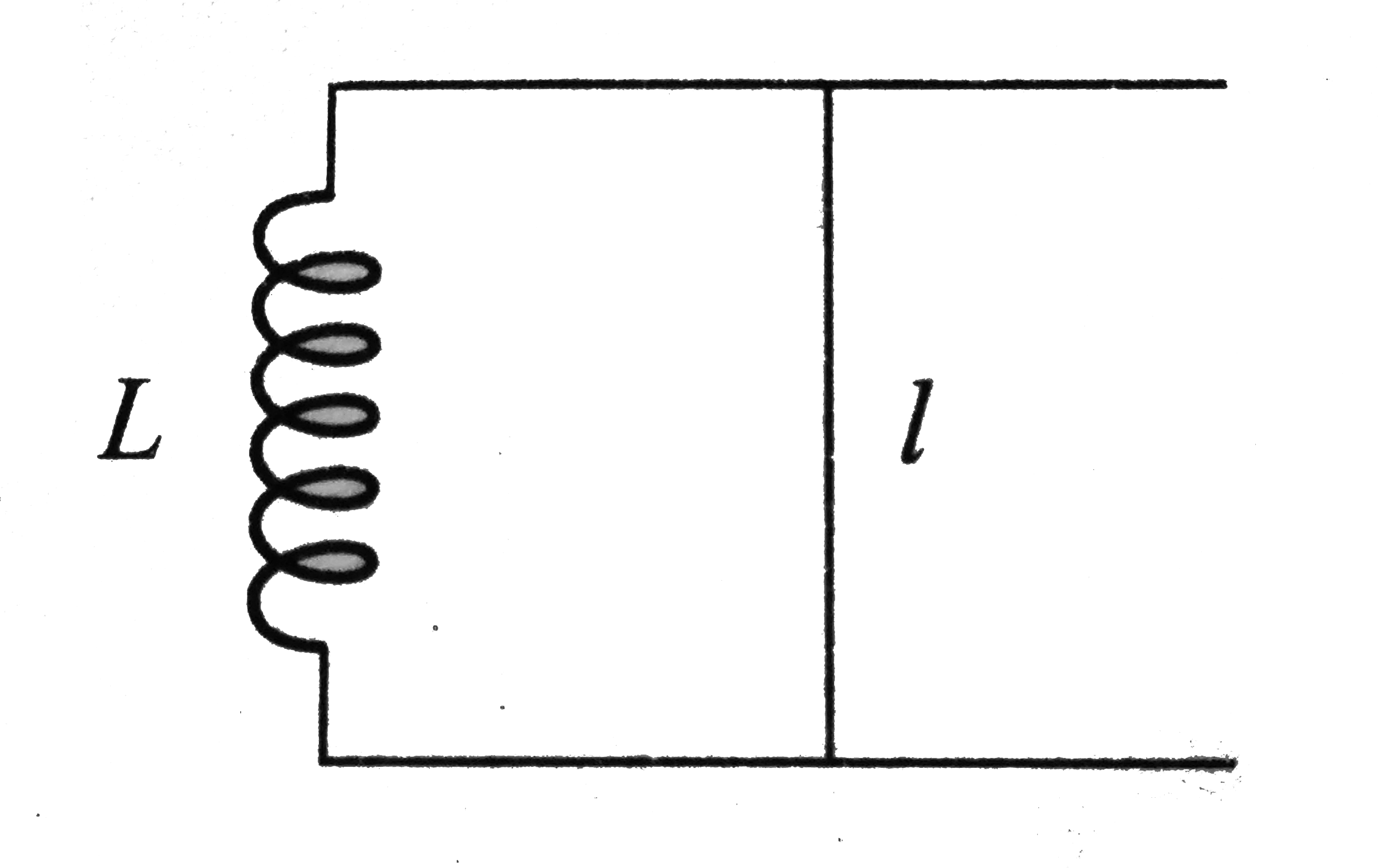 View Solution
View SolutionStatement I: A resistance R is connected between the two ends of the parallel smooth conducting rails. A conducting rod lies on these fixed horizontal rails and a uniform constant magnetic field B exists perpendicular to the plane of the rails as shown in Fig. if the rod is given a velocity υ and released as shown in Fig. 3.188, it will stop after some time. the total work done by magnetic field negative.
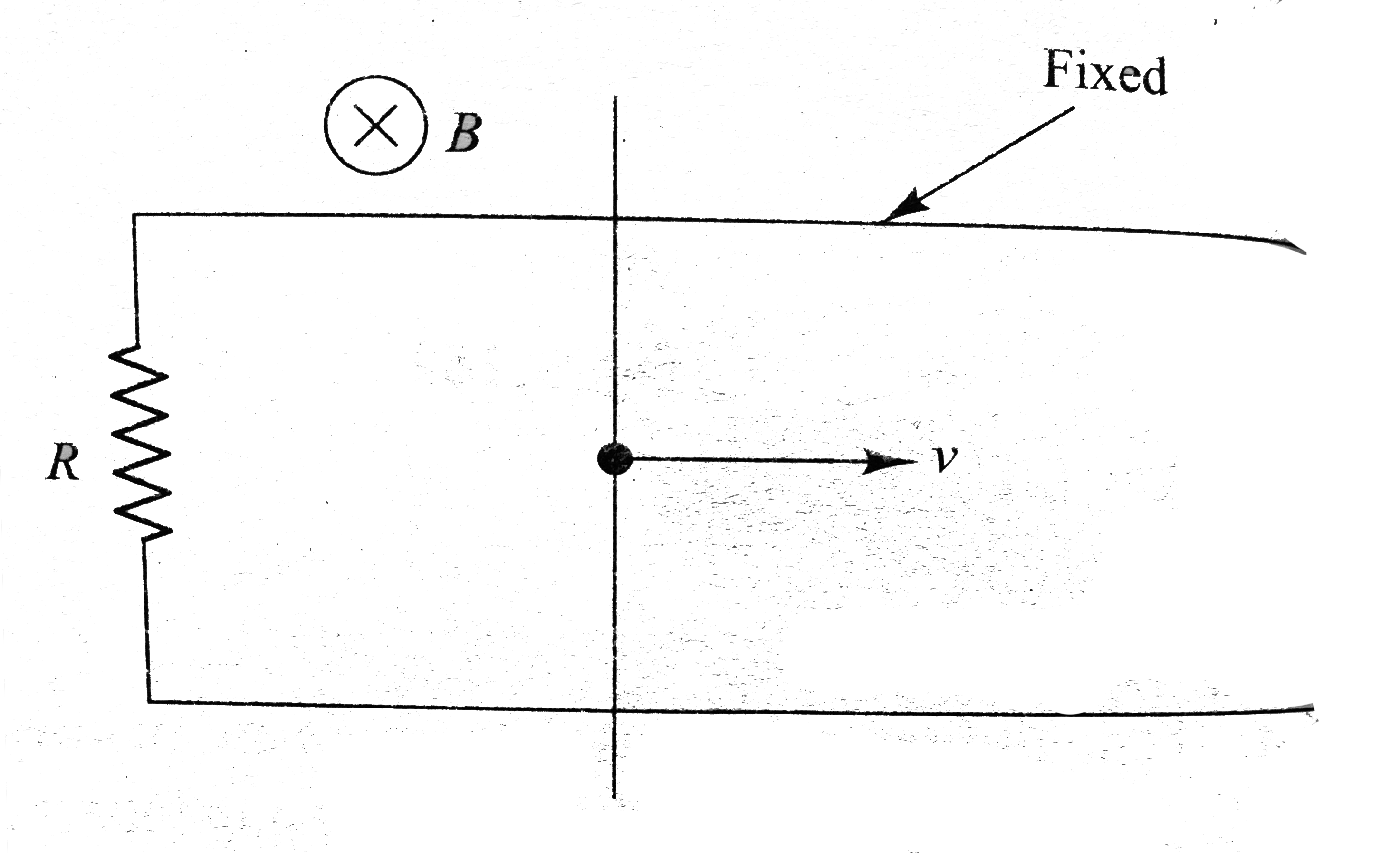
Statement II: If force acts opposite to direction of velocity its work done is negative.View Solution

